You may know already how to read and spell animal-based ingredients in Korean, so how about studying plant-based foods now? Here’s essential Korean vocabulary regarding vegetables! 👇 [Don’t like veggies?! 😱 IMPOSSIBLE! But how about fruits? Or cereals, beans, mushrooms, seaweed, nuts or seasonings?] Btw, if you don’t know how to read Korean yet, here’s a free and easy guide to learning the alphabet!
There are SOOOOO many veggies to eat! 🍆🤗🥦 And Korean cuisine features a great diversity of edible plants! Why not discover the taste of new and native vegetables as well as wild herbs, when you have a chance?! If you know some Korean, you can order your veggie-friendly food, enjoy grocery shopping and enjoy getting your share of daily vegetables much more easily~ 💚🥕
Below vocabulary list provides the names of vegetables in Korean language. 🗒🥦🇰🇷🇰🇵 The following words are ordered by “type of vegetable” (?) while considering what part of the plant is consumed, e.g. root or rhizome🥕, botanical fruit🌶 or leaves🌿.
The list may not contain the name of every vegetable or edible plant that exists on our planet, but it aims to represent the common, globally known vegetables🌎 as well as typical Korean 🇰🇷vegetables🇰🇵! It is currently the longest and most extensive list of vegetables in Korean. Is YOUR favorite vegetable missing? Is there a Korean name for it? ❓ Feel free to let me know! ❗️ Comment below or send me a message!
If you want to be able to talk about vegetables in Korean, then you need to learn how to read, spell and write vegetable names, right? First and foremost, however, you ought to know that there are several Korean words which translate to “vegetable”! 👇
yachae 야채 野菜
chaeso 채소 菜蔬
namsae 남새
(more common in North Korea🇰🇵)
In contemporary South Korea🇰🇷, the words yachae 야채 and chaeso 채소 can be used interchangeably, but 야채 seems to be more frequent in spoken language and 채소 in written language. So it’s best to know both! 😉
Note how in Korea, there are precise names for certain types of vegetables and you can specify exactly e.g. what size and shape of scallion or chili peppers you are referring to! There are also regional differences due to dialects, which this list can hardly reflect in detail.
So let’s get started and take a look at the various kinds of vegetables and the names of edible plants in Korean! 🔍👀
⚠️ UPDATE: There are now pictures of food items along with the respective Korean name, pronunciation and English translation. Find the slideshows below!👇

Names of vegetables in Korean
plant-based ingredients 식물성 재료 植物性材料 sikmulseong [shingmulseong] jaeryo
🌶 vegetables that grow as fruit 🥒🍆
- 🥑 avocado – 아보카도 abokado
- 🫑 bell pepper, sweet pepper – 피망 pimang / 파프리카 papeurika
- 🌶 chili pepper – 고추 gochu
- 🔴 red chili – 홍고추 hong-gochu
- 🟢 green chili – 청고추 cheong-gochu / 풋고추 put-gochu
- 🔥 spicy (green) chili pepper, chili variety “Cheongyang” – 청양고추 cheong-yang-gochu
- 🔥 small, slightly spicy green chili pepper – 꽈리고추 kkwari-gochu
- 🥒 large, non-spicy green chili pepper – 오이고추 o-i-gochu [lit. “cucumber chili”]
- 🌽 corn – 옥수수 oksusu / 강냉이 gangnaengi
- glutinous corn, waxy corn – 찰옥수수 chal oksusu [most common type of corn in Korea]
- sweet corn – 스위트콘 seuwiteu kon / 사탕옥수수 satang oksusu
- variety of sweet corn – 초당옥수수 chodang oksusu
- 🍆 eggplant – 가지 gaji
- 🥒 cucumber (Cucumis sativus) – 오이 o-i
- light green Korean cucumber – 백오이 baek-o-i
- dark green Korean cucumber – 청오이 cheong-o-i
- Korean cucumber – 조선오이 joseon-o-i
- old Korean cucumber (large, brown-colored) – 노각 nogak / 늙은 오이 neulgeun o-i
- 🎃 pumpkin – 호박 hobak
- sweet pumpkin, kabocha squash – 단호박 dan-hobak
- mature orange pumpkin – 늙은호박 neulgeun-hobak
- Korean cultivar of pumpkin, “Joseon pumpkin” – 조선호박 joseon-hobak / 동이호박 dongi-hobak
- butternut squash – 땅콩호박 ttangkong hobak [lit. “peanut pumpkin”]
- spaghetti squash – 국수호박 guksu hobak [lit. “noodle pumpkin”]
- 🥒 Korean zucchini, Korean courgette (Cucurbita moschata) – 애호박 aehobak [lit. “young pumpkin”]
- 🥒 zucchini, courgette (Cucurbita pepo) – 주키니 jukini
- 🥒 calabash, gourd (Lagenaria siceraria / leucantha) – 박 bak
- 🥒 sponge gourd, luffa, loofah (Luffa aegyptiaca / cylindrica?) – 수세미오이 susemi o-i
- 🥒 bitter melon, bitter gourd, Chin. kǔguā 苦瓜 (Momordica charantia) – 여주 yeoju [👉medicinal use]
- 🥒 Oriental pickling melon, Jap. shirouri シロウリ / 白瓜 (Cucumis melo) – 월과 越瓜 wolgwa / 울외 ulwoe / 큰참외 keun chamoe [literally “large chamoe“]
- okra, okro, ochro, ladies’ fingers (Abelmoschus esculentus) – 오크라 okeura
- 🍅 tomato – 토마토 tomato [actually considered as fruit in Korea!]
- fully ripe, red tomato – 완숙토마토 完熟 wansuk-tomato
- cultivar of pink-greenish tomato – 찰토마토 chal-tomato
- cultivar of dark green tomato – 흑토마토 heuk-tomato
- cultivar of Korean tomato (tastes slightly salty) – 대저토마토 daejeo-tomato / 짭짤이 토마토 jjapjjari-tomato
- cherry tomato – 방울토마토 bangul tomato
- date tomato – 대추(방울)토마토 daechu (bangul) tomato
- 🥔 air potato, air yam, potato yam, Jap. karaino (Dioscorea bulbifera) – 하늘마 haneul ma / 넝쿨마 neongkulma / 열매마 yeolmae ma / 우주마 uju ma
- 🫒 olive – 올리브 ollibeu
- green bean, French bean, string bean – 그린빈 geurin-bin / 프렌치빈 peurenchi-bin
- 채두 chaedu
- sugar pea, snow pea, snap pea, edible pod pea (Pisum sativum) – 스위트피 seu-witeu-pi / 백설콩 baekseol kong
⚠️ For quick learning and easy remembering: Here’s a slideshow illustrating the vocabulary! 👇 More images will be added continuously!
🥕 underground vegetables / roots & tubers 🥔🍠
- root vegetables in general – 뿌리채소 ppuri chaeso
- 🥕 carrot – 당근 唐根 dang-geun
- radish (Raphanus raphanistrum subsp. sativus) – 무 mu / 무우 mu-u
- Korean radish – 무 mu
- young radish – 열무 yeolmu
- ponytail radish – 알타리(무) altari(mu)
- variety “Chonggak radish”, ponytail radish – 총각무 chonggak-mu
- Japanese radish, Jap. daikon 大根 – 왜무 倭 waemu
- European radish (small, round, pink outside, white inside) – 방울무 bangul mu / 적환무 jeok-hwanmu
- turnip (Brassica rapa subsp. rapa) – 순무 sunmu
- sugar beet (Beta vulgaris subsp. vulgaris, Altissima Group) – 사탕무 satang mu
- beetroot, red beet (Beta vulgaris subsp. vulgaris, Conditiva Group) – 비트 biteu
- 🥔 potato – 감자 gamja (Jeju-do dialect: 지슬 jiseul)
- 🍠 sweet potato – 고구마 goguma
- ginseng (grown in agriculture) – 인삼 人蔘 insam [👉medicinal use]
- ⛰️ wild ginseng (grown on mountains) – 산삼 山蔘 sansam
- 💦 fresh and raw ginseng – 수삼 水蔘 susam
- dried ginseng – 건삼 乾蔘 geonsam
- 🔴 “red ginseng” (aged ginseng, steamed and dried) – 홍삼 紅蔘 / 红蔘 hongsam
- ginger (Zingiber officinale) – 생강 生薑 saeng-gang
- myoga, myoga ginger, Japanese ginger (Zingiber mioga) – 양하 襄荷 yang-ha / 양애 yang-ae
- turmeric, curcuma (Curcuma longa) – 강황 ganghwang / 심황 simhwang / 울금 ulgeum [actually a seasoning]
- 🧅 common onion, bulb onion (Allium cepa) – 양파 yangpa
- shallot – 샬롯 syallot
- 🧅 scallion / spring onion – 파 pa
- large scallion (not leek!) – 대파 daepa
- small and thin scallion (not chives!) – 실파 silpa
- Egyptian / tree onion (Allium × proliferum) – 쪽파 jjokpa
- 🧄 garlic (Allium sativum) – 마늘 maneul
- 🧄 Korean wild garlic, Siberian onion (Allium ochotense and Allium microdictyon) – 명이(나물) 茗荑 myeongi (namul) / 산마늘 san maneul (lit. “wild garlic”)
- 🧄 garlic chives (Allium tuberosum) – 부추 buchu 韭菜 (Jeollanam Province dialect: 소불 sobul)
- 🧄 Thunberg’s chive, Thunberg garlic (Allium thunbergii) – 산부추 san buchu (lit. “wild garlic chives”)
- 🧄 aging chive, German garlic, broadleaf chives (Allium senescens) – 두메부추 dume buchu (lit. “secluded garlic chives”)
- 🧅 Korean wild chives (Allium monanthum) – 달래 dallae
- 🧅 roots of Hooker chives (Allium hookeri) – 삼채 samchae
- 🪷 lotus root – 연근 蓮根 yeon-geun
- 🌷 bell flower root (Platycodon grandiflorus) – 도라지 doraji
- 🌷 lance asiabell root (Codonopsis lanceolata) – 더덕 deodeok
- 🥔 Chinese yam, Chin. shānyào 山药 , Jap. nagaimo 山藥 (Dioscorea polystachya) – 마 ma
- straight, long variety of Chinese yam – 장마 jangma
- short variety of Chinese yam – 산마 sanma / 단마 danma
- bulbils of Chinese yam, Chin. shanyao dou 山药豆 or shanyao dan 山药蛋 – 마씨앗 ma-ssiat / 마씨 ma-ssi
- burdock root, Chin. niúbàng (牛蒡), Jap. gobō ゴボウ (Arctium lappa) – 우엉 u-eong
- 🥔 taro, corms of Colocasia esculenta – 토란 土卵 toran / 알토란 altoran
- 🥔 topinambur, Jerusalem artichoke (Helianthus tuberosus) – 돼지감자 dwaeji gamja (lit. “pig potato”) / 뚱딴지 ttung-ttanji
- 🥔 jícama, yam bean, Mexican turnip (Pachyrhizus erosus) – 히카마 hikama / 히까마 hikkama / 얌빈 yambin / 콩감자 kong-gamja (lit. “bean potato”)
- 🍠 yacón (Smallanthus sonchifolius) – 야콘 yakon
- knotroot, crosne, Chinese artichoke, Japanese artichoke, artichoke betony (Stachys affinis) – 초석잠 草石蠶 choseokjam
- Japanese lady bell (Adenophora triphylla) – 잔대 jandae / 사삼 沙蔘 sasam / 딱주 ttakju / 제니 jeni / 잔다구 jandagu [👉medicinal use]
- East Asian arrowroot, kudzu, Jap. kuzu, Chin. gé 葛 (Pueraria montana var. lobata) – 칡 chik / 갈 葛 gal [mostly used in beverages or as a food additive]
- 🥬 roots of napa cabbage – 배추뿌리 baechu ppuri / 백채근 白菜根 baekchae geun / 배추꼬리 baechu kkori / 배추꼬랭이 baechu kkoraengi (local dialect)
- 🌰 water chestnut, Chinese water chestnut, corms of Eleocharis dulcis – 올방개 olbanggae [👉 not actually a nut!]
⚠️ For quick learning and easy remembering: Here’s a slideshow illustrating the vocabulary! 👇 More images will be added continuously!
🌿 leafy vegetables / greens 🥦🥬
- leaf vegetables in general – 잎채소 ip-chaeso
- 🥬 napa cabbage, Chinese cabbage – 배추 baechu
- dark outer leaves of napa cabbage – 우거지 ugoeji (sometimes also radish)
- inner leaves of napa cabbage, core of napa cabbage – 알배기 (배추) albaegi (baechu) [sometimes: 알백이 albaegi ] / 배추속대 baechu sokdae]
- flat variety of napa cabbage – 봄동 bomdong
- thin variety of napa cabbage – 얼갈이 (배추) eolgari (baechu) (sometimes: 얼가리 eolgari)
- cabbage, white cabbage – 양배추 yang-baechu
- 🟣 red cabbage – 적양배추 jeok-yangbaechu / 적채 赤菜 jeokchae
- 🥬 kale – 케일 ke-il
- ornamental cabbage, ornamental kale – 엽목단 yeopmokdan / 꽃양배추 kkot-yangbaechu
- 🟣 purple ornamental cabbage, purple ornamental kale – 적색꽃양배추 jeoksaek kkot-yangbaechu
- ⚪️ white ornamental cabbage, white ornamental kale – 백색꽃양배추 baeksaek kkot-yangbaechu / 흰색꽃양배추 huin kkot-yangbaechu
- cabbage cultivar, mix of kale and ornamental cabbage – 로얄채 royal chae
- brussel sprouts – 미니양배추 mini yang-baechu / 방울양배추 bangul yang-baechu
- kohlrabi – 콜라비 kollabi
- 🥦 broccoli – 브로콜리 beurokolli
- 🥦 cauliflower – 콜리플라워 kollipeullawo / 꽃양배추 kkot-yangbaechu
- 🥬 lettuce – 상추 sangchu
- iceberg lettuce / head lettuce – 양상추 yang-sangchu / 결구상추 結球 gyeolgu-sangchu
- romaine lettuce – 로메인상추 romein-sangchu
- lollo rosso lettuce – 꽃상추 kkot-sangchu
- red oakleaf lettuce – 적상추 jeok-sangchu
- green oakleaf lettuce – 청상추 cheong-sangchu
- celtuce, stem lettuce, Chinese lettuce – 줄기상추 julgi-sangchu / 궁채 gungchae / 뚱채 ttungchae
- central tops of lettuce plant – 쫑상추 jjongsangchu
- 경수채 gyeongsuchae
- 🥬 red ribbed chicory, cultivar “Red Rib” of Cichorium intybus – 치커리 chikeori
- 🥬 endive – 엔다이브 endaibeu
- 🌿 celery – 셀러리 selleori
- spinach – 시금치 sigeumchi
- Korean variety of spinach (from Bigeum Island 비금도) – 섬초 seomcho / 비금도 시금치 bigeumdo sigeumchi
- Korean variety of spinach (from Pohang 포항) – 포항초 pohangcho
- stalk spinach (spinach with thick stalk before flowering in spring) – 쫑시금치 jjong sigeumchi
- 🌿 water spinach (Ipomoea aquatica) – 공심채 空心菜 / 空芯菜 gongsimchae / 모닝글로리 moning geullori
- 🌿 Korean water celery, Java water dropwort (Oenanthe javanica) – 미나리 minari
- 🥬 bok choy, pak choi (Brassica rapa subsp. chinensis) – 청경채 靑莖菜 cheong-gyeong-chae
- tat choy, tatsoi (Brassica rapa subsp. narinosa) 塌菜 – 다채 dachae
- 🥬 chard, mangold, silver beet – 근대 geundae
- 🥬 vegetable mustard, mustard greens – 갓 gat
- 🌿 rapeseed greens (Brassica napus) – 유채(나물) 油菜 yuchae (namul) / 하루나 haruna / 평지 pyeongji
- 🌿 crown daisy, chrysanthemum greens (Glebionis coronaria) – 쑥갓 ssukgat
- 🌿 young leaves of cutleaf coneflower (Rudbeckia laciniata) – 삼잎국화 samip gukhwa
- 🌿 leaves of Korean angelica, giant angelica, purple parsnip, dangquai (Angelica gigas) – 당귀(잎) dang-gwi (nip) / 참당귀 chamdang-gwi [roots 👉medicinal use]
- 🌿 (Pleurospermum camtschaticum?) – 누리대(나물) nuridae (namul) / 누룩취 nurukchwi
- ☘️ Chinese mallow, leaves of Malva verticillata – 아욱 a-uk
- 🧄 garlic flower stems – 마늘쫑 maneul-jjong
- 🧄 garlic greens – 풋마늘 put-maneul / 마늘잎 maneulip
- 🧄 leaves of Korean wild garlic (Allium ochotense and Allium microdictyon) – 명이나물 myeongi-namul
- 🎍 sugarcane (Saccharum officinarum) – 사탕수수 satang-susu
- fennel (Foeniculum vulgare) – 회향 hoehyang / 펜넬 pennel / 페넬 penel
- aloe – 알로에 alloe
- 🌵 rock pine (Orostachys japonica) – 와송 瓦松 wasong / 바위솔 bawisol
- stringy stonecrop (Sedum sarmentosum) – 돌나물 dol-namul (also 돈나물 donnamul / 돗나물 dotnamul)
- saltmarsh sandspurry, sandspurrey, sea-spurrey (Spergularia marina) – 세발나물 sebal-namul
- samphire (Salicornia europaea) – 함초 鹹草 hamcho / 퉁퉁마디 tungtung madi
- herbaceous seepweed, annual seablite (Suaeda maritima) – 해홍나물 haehong namul / 갯나문재 gaet namunjae
- 🪷 watershield, Jap. junsai じゅんさい / ジュンサイ / 蓴菜, Chin. chúncài 莼菜 (Brasenia schreberi) – 순채 sunchae
- 🌿 vegetable greens in general – 나물 namul
- sweet potato greens – 고구마순 gogumasun
- taro greens, leaf stems of Colocasia esculenta – 토란대 toran-dae / 토란줄기 toran-julgi
- radish greens – 무청 mucheong
- dried radish greens – 시래기 siraegi (sometimes also from napa cabbage)
- 🌼 leaves of castoroil plant, castor bean plant (Ricinus communis) – 피마자(잎)나물 pimaja(ip)-namul / 아주까리나물 ajukkari-namul
- 🌶 leaves of chili plants, pepper leaves, chili greens – 고추잎 gochu-ip / 고춧잎 gochunip / 고추순 gochusun
- young perilla greens, Korean perilla, beafsteak plant (Perilla frutescens) – 깻단 kkaetdan
- tips of perilla plants – 들깨순 deulkkaesun / 깻순 kkaetsun
- 🌱 wild herbs, mountain herbs – 산나물 san-namul / 산채 山菜 sanchae
- 🌱 spring greens – 봄나물 bom-namul
- 🌿 mugwort (Artemisia princeps) – 쑥 ssuk
- 🌿 riverside wormwood (Artemisia selengensis var. cannabifolia) – 물쑥 mulssuk
- 🌿 (Ostericum sieboldii) – 메미나리 me-minari / 멧미나리 met-minari / 묏미나리 moet-minari (also 산미나리 san-minari)
- 🌿 ground elder, bishop’s weed, goutweed, wild masterwort (Aegopodium podagraria) – 산미나리 san-minari
- (Asyneuma japonicum / Phyteuma japonicum) – 영아자 yeongaja (also 산미나리 san-minari / 미나리싹 minari-ssak)
- 🌿 coastal hog fennel (Peucedanum japonicum) – 방풍나물 bangpung-namul / 식방풍 植防風sikbangpung / 갯기름나물 gaet-gireum namul
- 🌿beach silvertop, American silvertop (Glehnia littoralis) – 해방풍 haebangpung / 갯방풍 gaet-bangpung
- Korean thistle, gondre (Cirsium setidens) – 곤드레 gondeure / 고려엉겅퀴 goryeo eong-geong-kwi🌿 (Pimpinella brachycarpa) – 참나물 cham-namul
- 🌿 shepherd’s purse (Capsella bursa-pastoris) – 냉이 naengi
- tower rockcress, tower mustard (Arabis glabra) – 장대나물 jangdae namul / 장대순 jangdaesun
- sonchus-leaf crepidiastrum (Crepidiastrum sonchifolium) – 고들빼기 godeul-ppaegi
- Korean dandelion (Taraxacum platycarpum) – 민들레 mindeulle
- (Ixeridium dentatum) – 씀바귀 sseumbagwi
- 🍀 butterbur, great butterbur, Japanese butterbur, Jap. fuki フキ (Petasites japonicus) – 머위 meowi
- young leaves of butterbur – 머위순 meowi sun
- leaf stems of butterbur – 머위대 meowi dae
- flowers of butterbur – 머위꽃 meowi kkot
- Canadian hawkweed (Hieracium umbellatum) – 조밥나물 jobap namul
- 🌿 greens of edible amaranth (Amaranthus tricolor or Amaranthus mangostanus) – 비름나물 bireum namul
- 🌿 Chinese motherwort (Leonurus japonicus) – 익모초 益母草 ingmocho [primarily used in drinks]
- 🌿 ashitaba (Angelica keiskei) – 신선초 sinseoncho / 명일엽 明日葉 myeongil yeop
- tips of horseweed (Erigeron canadensis / Conyza canadensis) – 망초(대) 亡草 mangcho (dae)
- young plants of fleabane, annual fleabane, daisy fleabane, eastern daisy fleabane (Erigeron annuus) – 개망초 gae-mangcho
- 🌿 young greens of Heracleum moellendorffii – 어수리 eosuri
- 🌿 young greens of goat’s beard, buck’s beard, bride’s feathers (Aruncus dioicus) – 눈개승마 nun-gae seungma / 삼나물 sam-namul
- 🌱 young leaves of daylilies, daylily greens (Hemerocallis) – 원추리 wonchuri
- 🍀 palmate umbrella plant, shredded umbrella plant (Syneilesis palmata) – 우산나물 usan namul
- 🌿 mugwort (Artemisia princeps) – 쑥 ssuk
- 🌿 various plants from the family Asteraceae (primarily Aster and Ligularia) – 취나물 chwi-namul
- edible aster (Doellingeria scabra / Aster scaber) – 참취(나물) chamchwi (namul)
- Fischer’s ragwort, Fischer’s leopard plant (Ligularia fischeri) – 곰취(나물) gomchwi (namul)
- Asian goldenrod (Solidago virgaurea subsp. asiatica) – 미역취(나물) miyeok-chwi (namul)
- (Ainsliaea acerifolia) – 단풍취 danpung-chwi
- (Aster yomena) – 쑥부쟁이(나물) ssuk-bujaengi (namul)
- (Synurus deltoides) – 수리취 surichwi / 개취 gaechwi / 떡취 tteok-chwi / 산우방 山牛蒡 sanubang
- leaves in general – 잎 ip / 잎사귀 ipsagwi
- leaves used for wrapping food [e.g. in bokssam 복쌈]- 쌈채소 ssam-chaeso
- 🍃 perilla leaves, Korean perilla, beafsteak plant (Perilla frutescens) – 들깻잎 deulkkaennip / 깻잎 kkaennip
- 💜 Japanese purple perilla, Jap. shiso, Chin. zǐsū 紫蘇 (Perilla frutescens var. crispa) – 자소 紫蘇 jaso / (자)소엽 紫蘇葉 (ja) soyeop / 차조기잎 chajogi nip / 일본깻잎 ilbon kkaennip / 시소 siso
- 💚 green shiso – 청자소 靑紫蘇 cheong jaso / 청차조기 cheong chajogi
- 🍃 leaves of Korean mint (Agastache rugosa) – 배초향 排草香 baechohyang / 방아(잎) banga (nip) / 방아풀 banga pul (mostly used as a seasoning)
- 🍃 ramie leaves (Boehmeria nivea) – 모시잎 / 모싯잎 mosinip
- 🍃 mulberry leaves – 뽕잎 ppongnip
- 🎃 leaves of pumpkin plants – 호박잎 hobangnip
- bean leaves – 콩잎 kongnip
- leaves of China root (Smilax china) – 망개잎 mang-gaenip [primarily used in 망개떡 for wrapping Korean rice cakes]
- 🍃 leaves of Chinese yam (Dioscorea polystachya) – 마잎 manip
- 🪷 lotus leaves (Nelumbo nucifera) – 연잎 yeonnip [primarily used in tea or for lotus leaf rice 연잎밥]
- 🌲 pine needles – 솔잎 sollip [mostly used as a seasoning]
⚠️ For quick learning and easy remembering: Here’s a slideshow illustrating the vocabulary! 👇 More images will be added continuously!
🌱 sprouts, shoots and seedlings 🌱🌱
- 🌱 sprouts – 새싹 saessak
- 🌱 microgreens, sprouts without seed and roots (e.g. beetroot, chicory, pak choi) – 어린잎채소 eorinip chaeso / 베이비채소 be-ibi chaeso / 아이순 a-isun
- 🥕 radish sprouts, radish shoots – 무순 musun
- 🌾 buckwheat shoots – 메밀순 memilsun
- 🌾 barley sprouts, barley grass – 새싹보리 saessak bori / (보리순 borisun)
- 🌾 young barley greens – 보리순 borisun
- 🌱 pea shoots, Chin. dòumiáo 豆苗 – 완두순 豌豆筍 wandusun
- 🌱 mung bean sprouts – 숙주나물 sukju-namul / 녹두나물 nokdu-namul
- 🌱 soybean sprouts – 콩나물 kong-namul
- 🎍 bamboo shoots – 대나무순 daenamusun / 죽순 竹筍 juksun
- 🌿 bracken shoots, fiddlehead fern (several species) – 고사리 gosari
- 🌿 fern shoots, royal fern (several species of Osmunda) – 고비 gobi / 깨치미 kkaechimi
- 🌿 shoots of Korean angelica tree (Aralia elata) – 두릅(나물) dureup (namul) / 두릅순 dureup sun / 두릅나무순 dureup namusun / 나무두릅 namu dureup [literally “tree aralia”] / 참두릅 cham dureup [literally “true aralia”]
- 🌿 shoots of herbal aralia, spikenard (Aralia cordata) – (땅)두릅(나물) (ttang) dureup (namul) / (땅)두릅순 (ttang) dureup sun / 땅두릅 ttang dureup [literally “earth aralia”]
- 🌿 shoots of tree aralia, prickly castor oil tree (Kalopanax septemlobus) – 엄나무순 eom-namusun / 음나무순 eum-namusun / 개두릅 gae dureup [literally: “false aralia”]
- 🌿 shoots of Chinese lacquer tree (Toxicodendron vernicifluum) – 옻순 otsun
- 🌿 shoots of Eleutherococcus sessiliflorus – 오가피순 ogapisun / 오갈피순 ogalpisun
- 🌿 shoots of Chinese toona (Toona sinensis) – 가죽나물 gajuk-namul / 가죽나무순 gajuk-namusun / 참죽나무순 chamjuk-namusun
- 🌿 young leaves of hardy kiwi (Actinidia arguta) – 다래순 daraesun
- 🎍 asparagus – 아스파라거스 aseuparageoseu
⚠️ For quick learning and easy remembering: Here’s a slideshow illustrating the vocabulary! 👇 More images will be added continuously!
🥗 common vegetable foods 🍟🥣
- 🌿 dried vegetables and herbs – 묵은나물 mugeun namul / 진채 陳菜 jinchae / 건나물 乾 geon namul
- 🥗 Korean side dish – 반찬 banchan
- 🥗 vegetable side dish – 나물반찬 namul banchan
- 🥗 kimchi, Korean seasoned and fermented vegetables – 김치 kimchi
- Korean pickles – 장아찌 jangajji
- 🥒 Korean-style cucumber pickle – 오이장아찌 o-i jangajji / 오이지 o-i ji
- 🧄 garlic pickle – 마늘장아찌 maneul jangajji
- 🥕 sweet radish pickle, (yellow) pickled daikon, Jap. takuan 沢庵漬け / たくあん – 단무지 danmuji (old: 다꽝 dakkwang / 다꾸앙 dakku-ang)
- pickles (Western style) – 피클 pikeul
- 🥒 cucumber pickles – 오이피클 o-i pikeul
- 🥕 sweet and sour radish pickle – 무피클 mu pikeul
- 🥗 salad – 샐러드 saelleodeu (old: 사라다 sarada)
- 🥣 vegetable broth – 채수 chaesu / 채소국물 chaeso gungmul
- 🍟 fried vegetables – 야채튀김 yachae twigim
- 🍟 french fries, literally “fried potatoes” – 감자튀김 gamja twigim
- 🍠 Korean-style fried sweet potato – 고구마튀김 goguma twigim
⚠️ For quick learning and easy remembering: Here’s a slideshow illustrating the vocabulary! 👇 More images will be added continuously!
.
.
✍️ Work is still in progress! This list will be expanded gradually! ✍️
📝 Any questions, comments, vocabulary suggestions and language feedback are welcome! 🤗
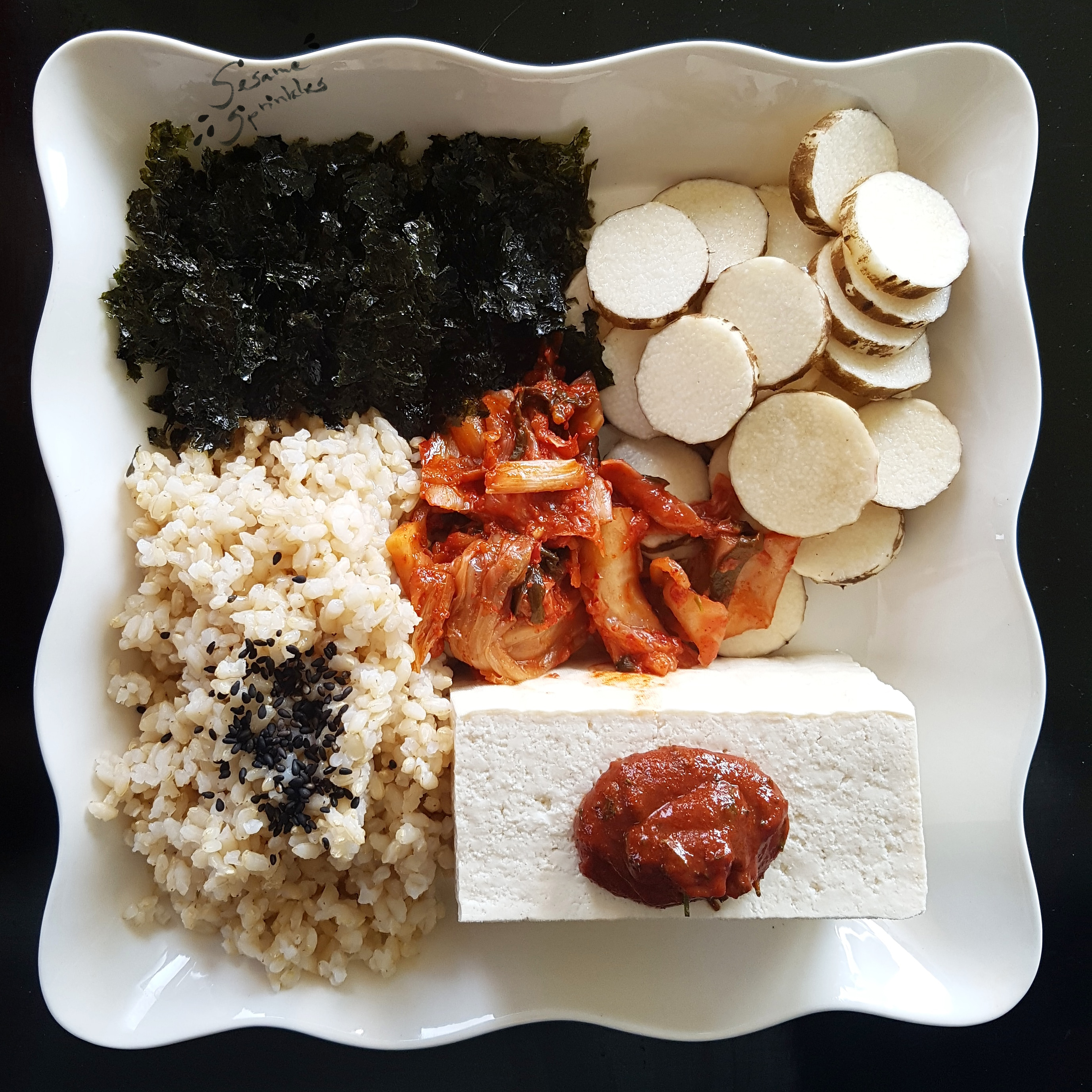

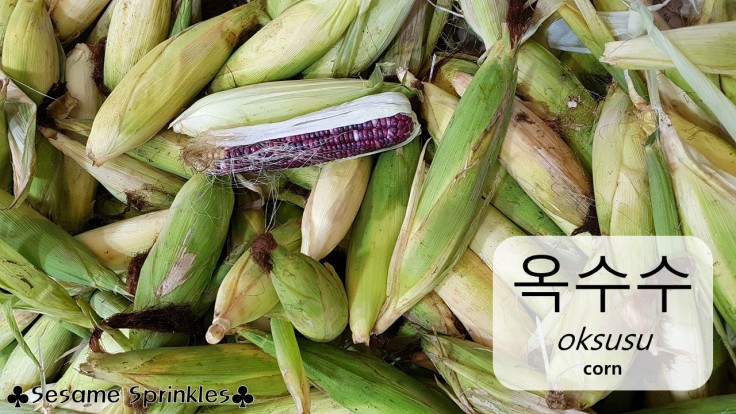
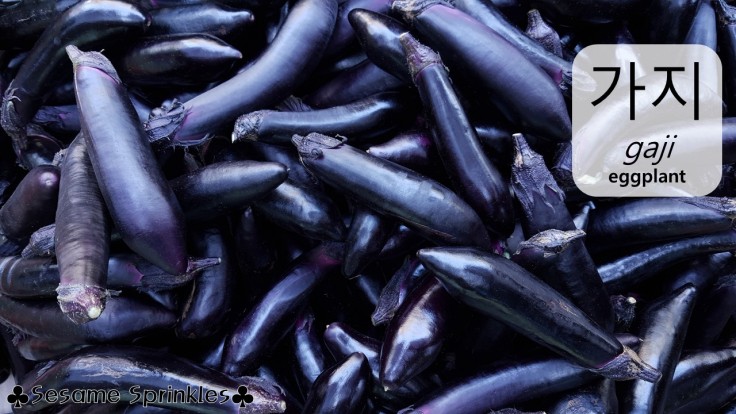


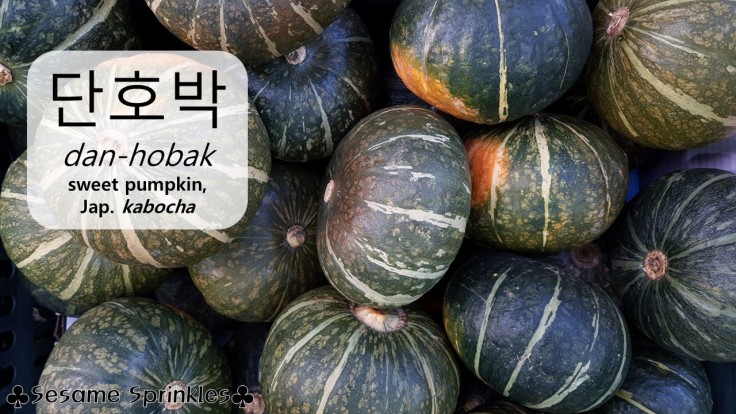









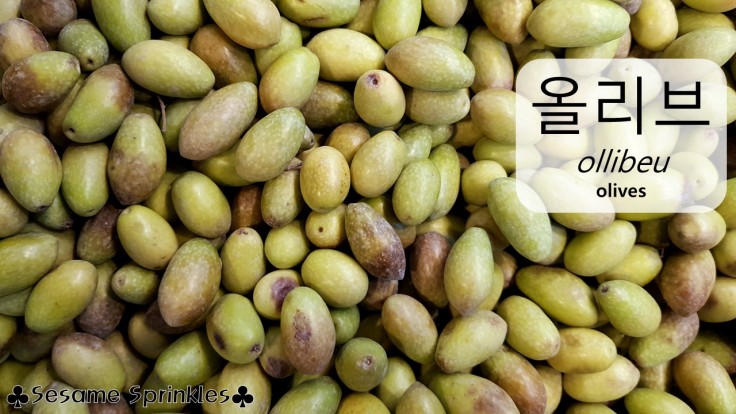



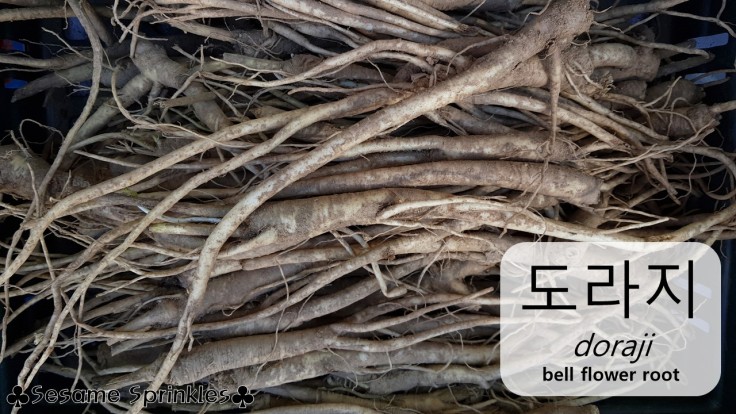

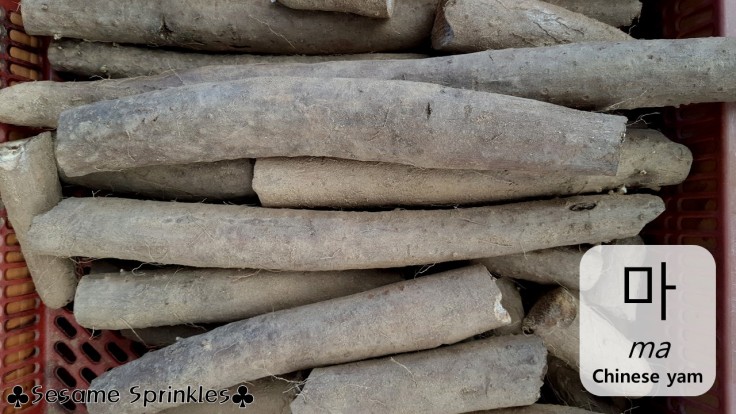



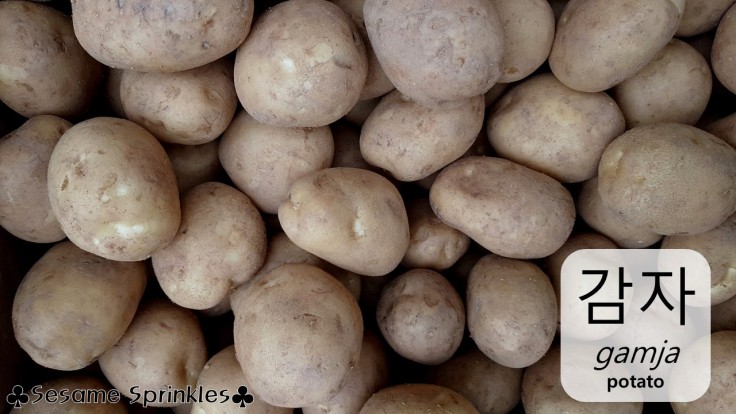

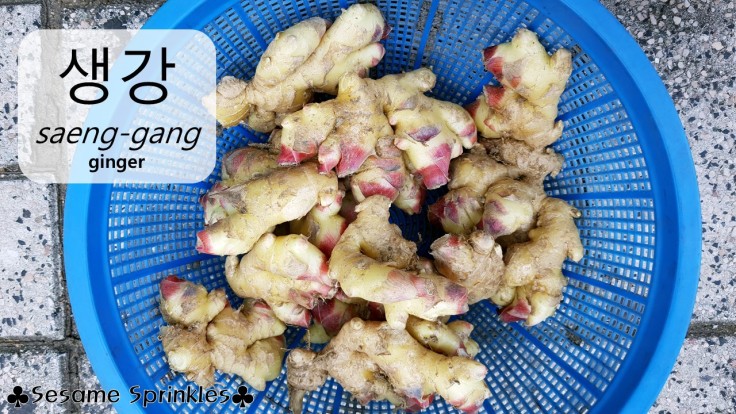





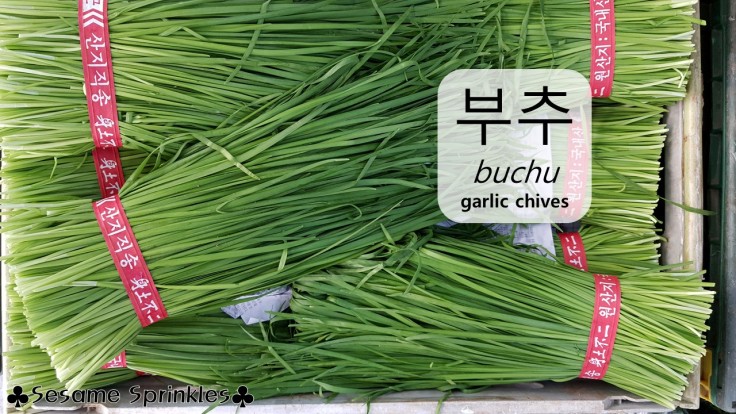

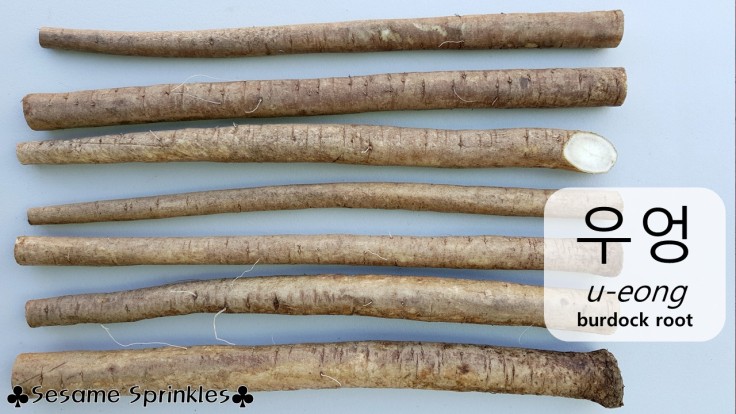

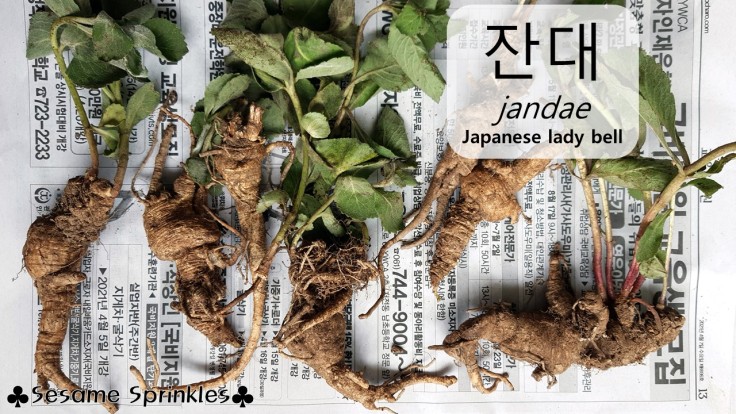



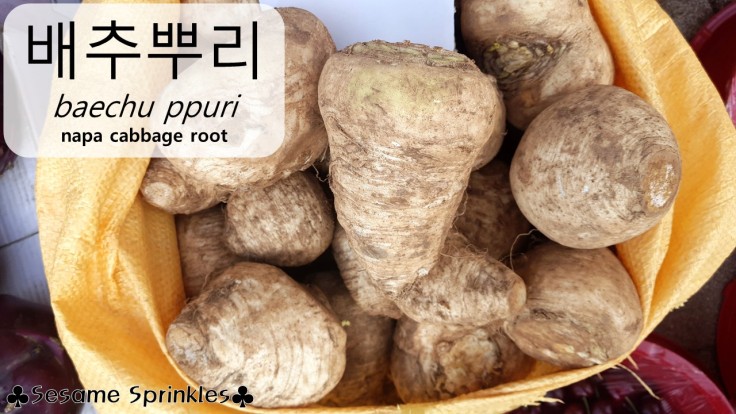
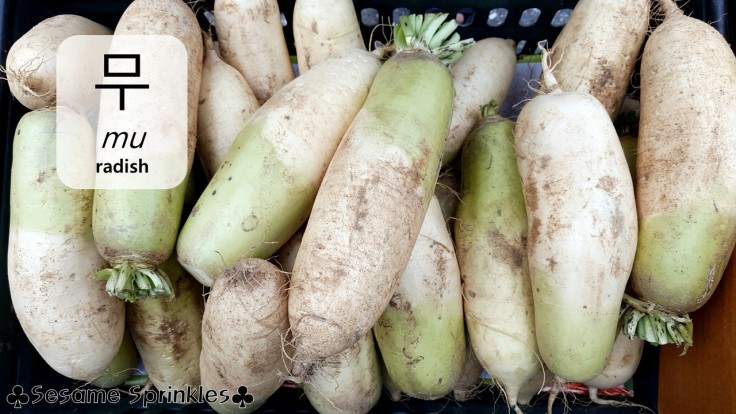


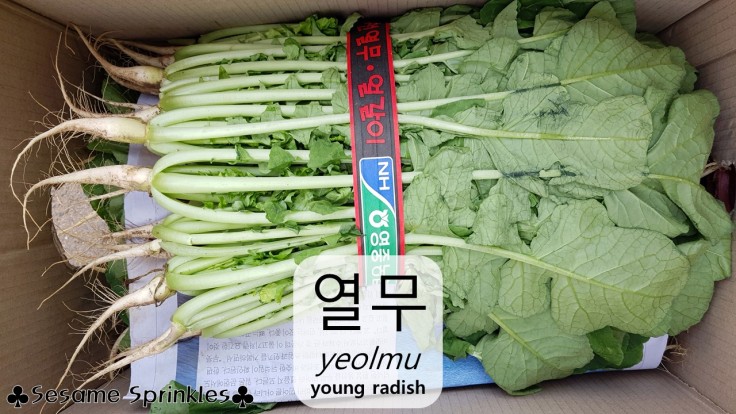
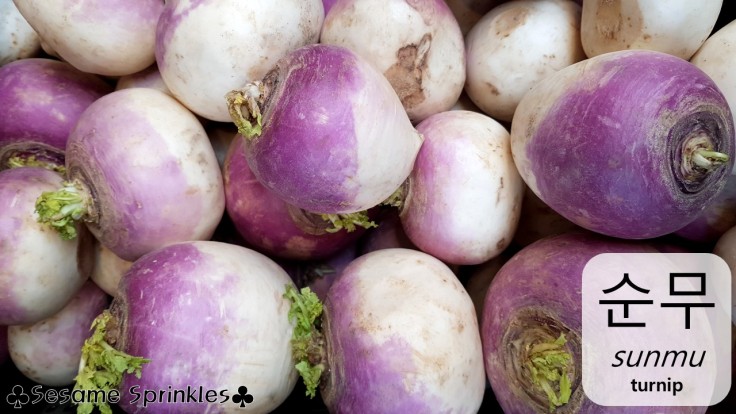





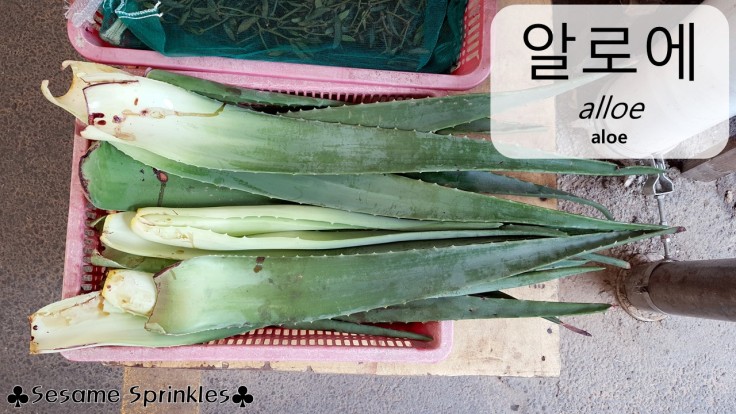













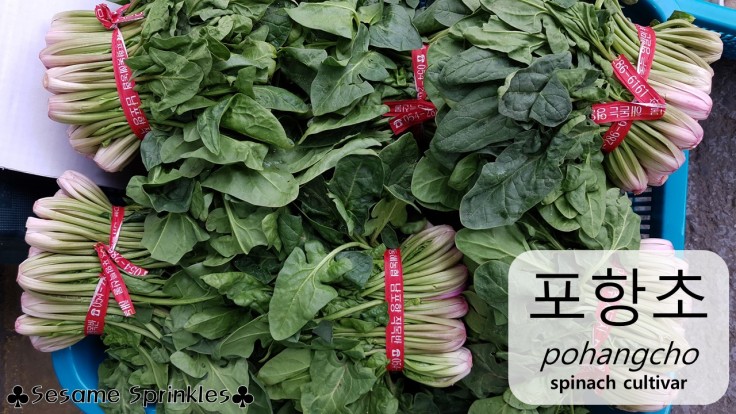

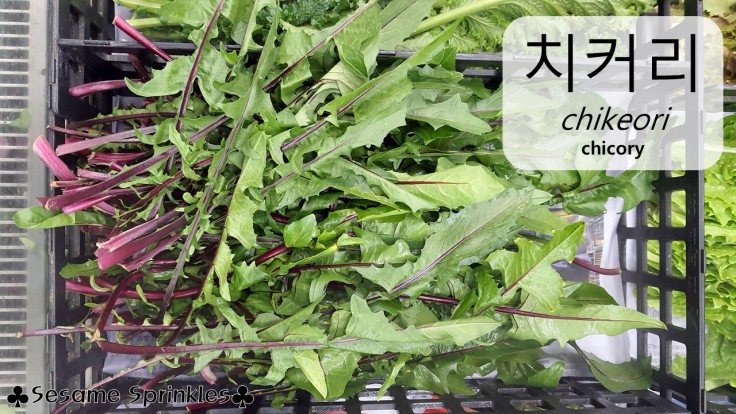
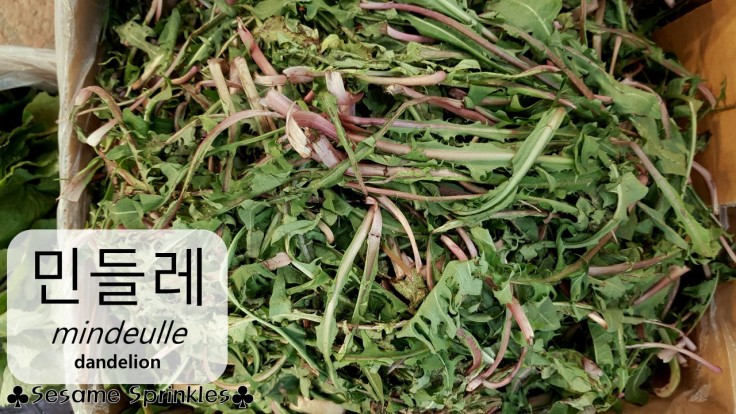










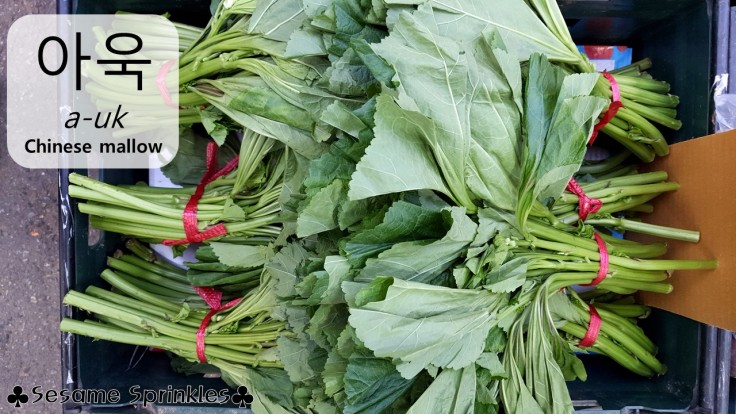


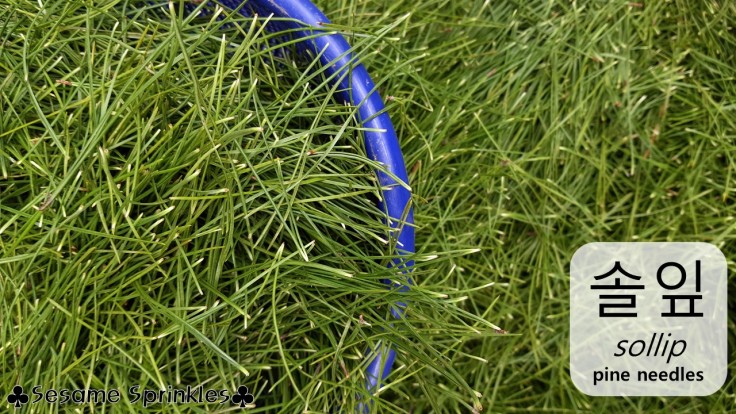
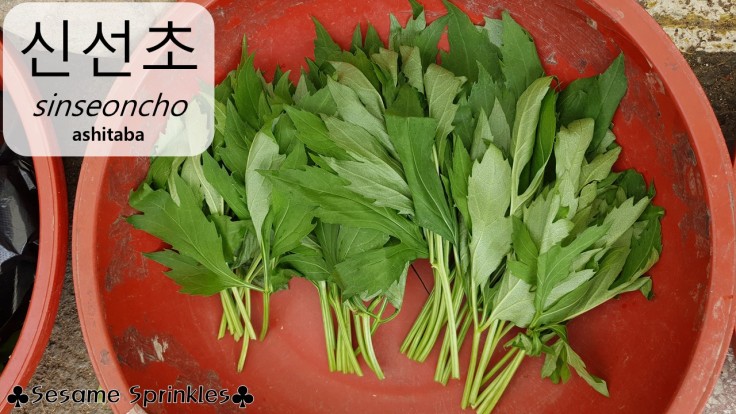



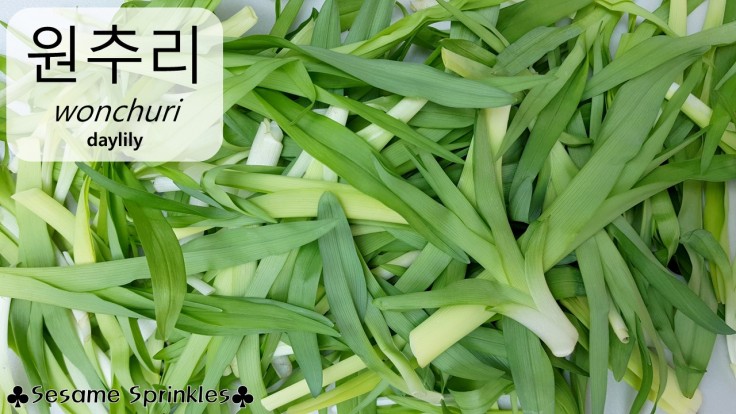
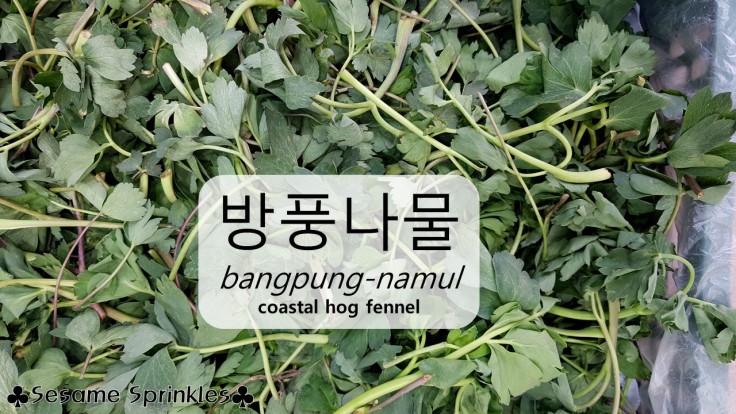

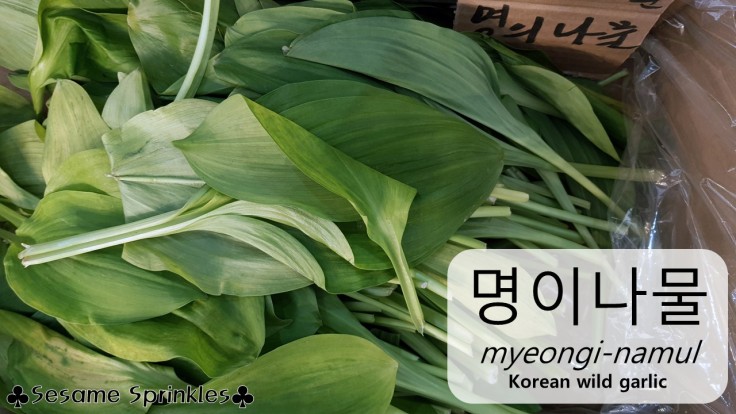

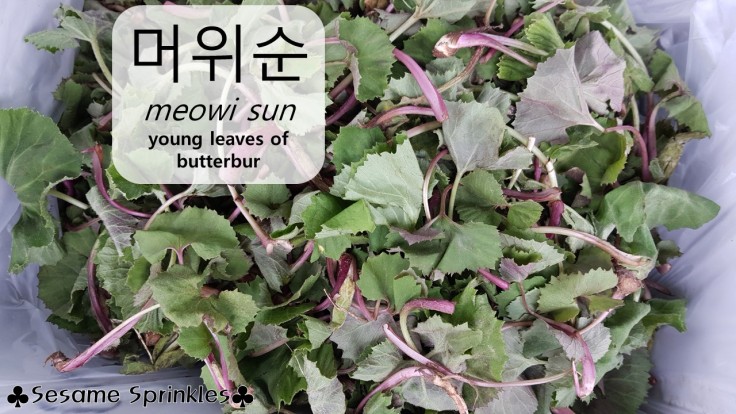


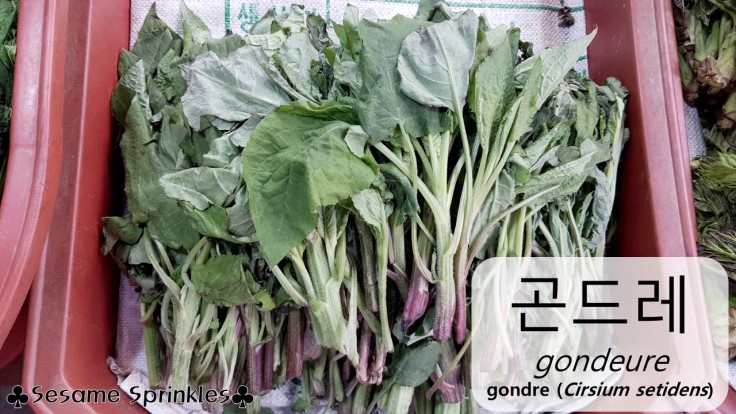



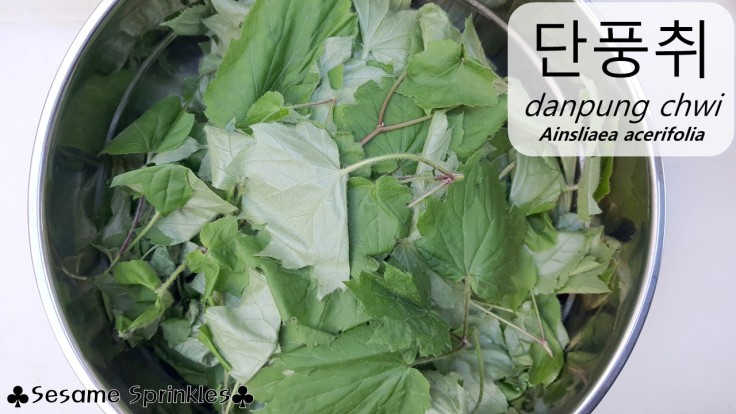
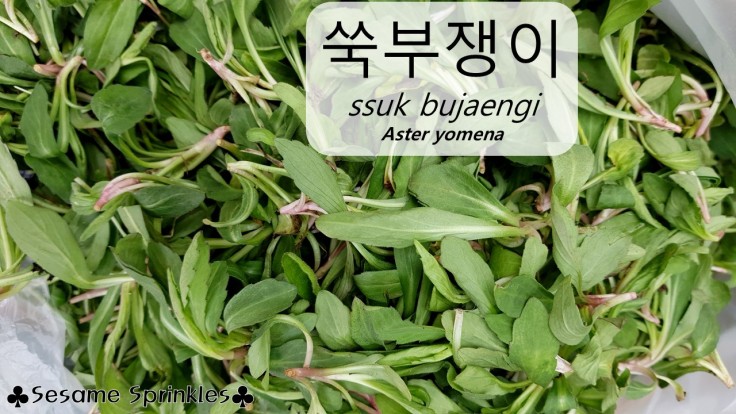



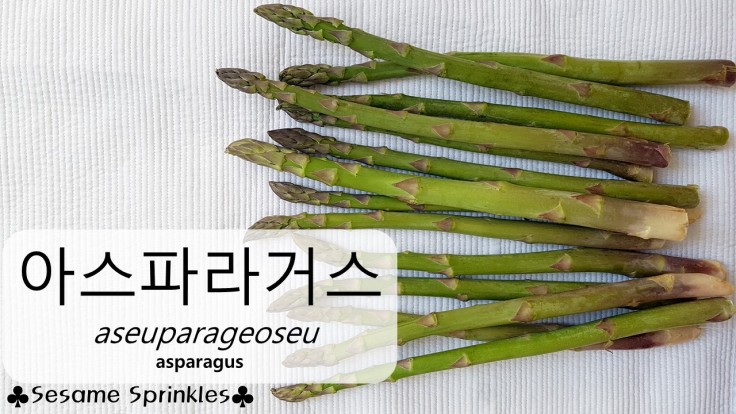









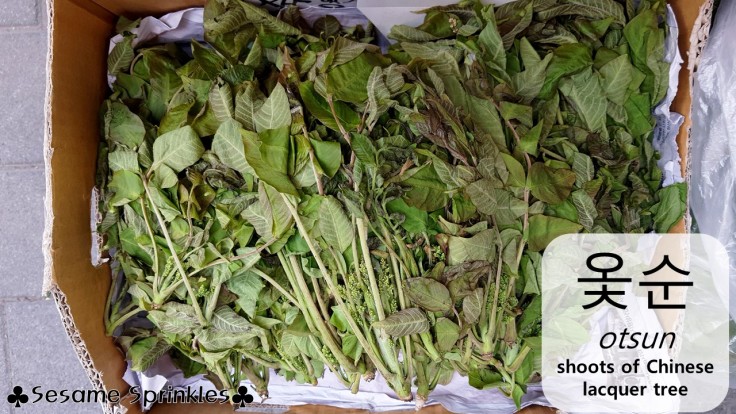














i want to thank u soooo much for this list!!!!! u guys r awesome!!!! i am korean american but i only know english!! this helps me out when shoppin for korean supplys!!!! i appreciate the time u put into this!!!! & pls keep adding more!!!!! i hope u will expand & include all the different seafoods & fruits of this beautiful country!!! tysm again!!!
LikeLike
Thank you very much for your comment! 😊 That’s very motivating! I promise, I’ll continue working on the lists! There is SO much diversity, I keep discovering new things, lol! 😆 Btw, a couple of seafood names are listed in the post “Animal-based ingredients” (https://sesamesprinkles.home.blog/2020/01/23/vocabulary-animal-ingredients/).
Hope you find some Korean ingredients in the US and have fun cooking&eating!
Love from Seoul 💚
LikeLike
Thank you so much for making this list. I am vegan as well and research uncommon food crops (at least here in America) and this has been very helpful. Hope you don’t mind a few questions. I have a reference book that indicates the young leaves of Chinese Yam (Dioscorea Batatas) are edible – have you encountered this? Concerning Doraji (Platycodon Grandiflorus) root, are you aware of any markets selling multiple cultivars or specifically naming a certain cultivar (perhaps blue flowered vs white flowered)? I have read that even mature leaf stems of Japanese butterbur (Petasites japonicus) are eaten – has this been your experience or are they only eaten when young? And are they always peeled? Thank you so much for any help you can provide!
LikeLiked by 1 person
Thank you for your comment and your questions! 😊
Since you asked, I checked online for Korean recipes involving leaves of Chinese Yam (마잎) and they do exist! I have never seen them in store or on a traditional market, so I wasn’t aware that the leaves are actually edible! Thank you for pointing that out! I will add it to the list and keep my eyes open – hopefully I can see them for real some time!
Regarding Doraji, the roots are not specifically sorted by the color of their flowers, but it is common to sort them by size and age. There is also regular Doraji and Yak-Doraji 약도라지 (“medicinal Doraji”), which appear to be the main types in Korea. When buying Doraji seeds, however, people do distinguish by color and seeds for e.g. white-flowered Doraji can be purchased separately.
Yes, the shoots as well as the stems of Japanese butterbur (머위) are eaten in Korea. (I will add both items to the list asap!) The stems of the mature leaves (머위대) do need to be peeled, because the fibers on the outside are particularly tough.
Again, thank you for your constructive questions! 💚
Hope you can experience the taste of these plants as well!
BonBon
LikeLike
What a wonderful response, thank you so much that is very helpful. I am glad you found something for the yam leaves – I couldn’t find anything myself outside that one book but then again you have access to everything written in Korean! I’ve just started growing these vegetables in my garden so I am hoping to taste them soon! Best.
LikeLike
Welcome any time! 🙂
Awesome that you’re growing them yourself! I bet it’s even more exciting to taste them soon!
Btw, I didn’t find many recipes for yam leaves, the most common way of eating them seems to be after pickling in soy sauce and other seasonings. In case it helps when browsing (or for inspiration), pickled Yam leaves are called 마잎장아찌 in Korean. And in general, they seem to get blanched before eating as well.
Happy cooking adventures~
LikeLike